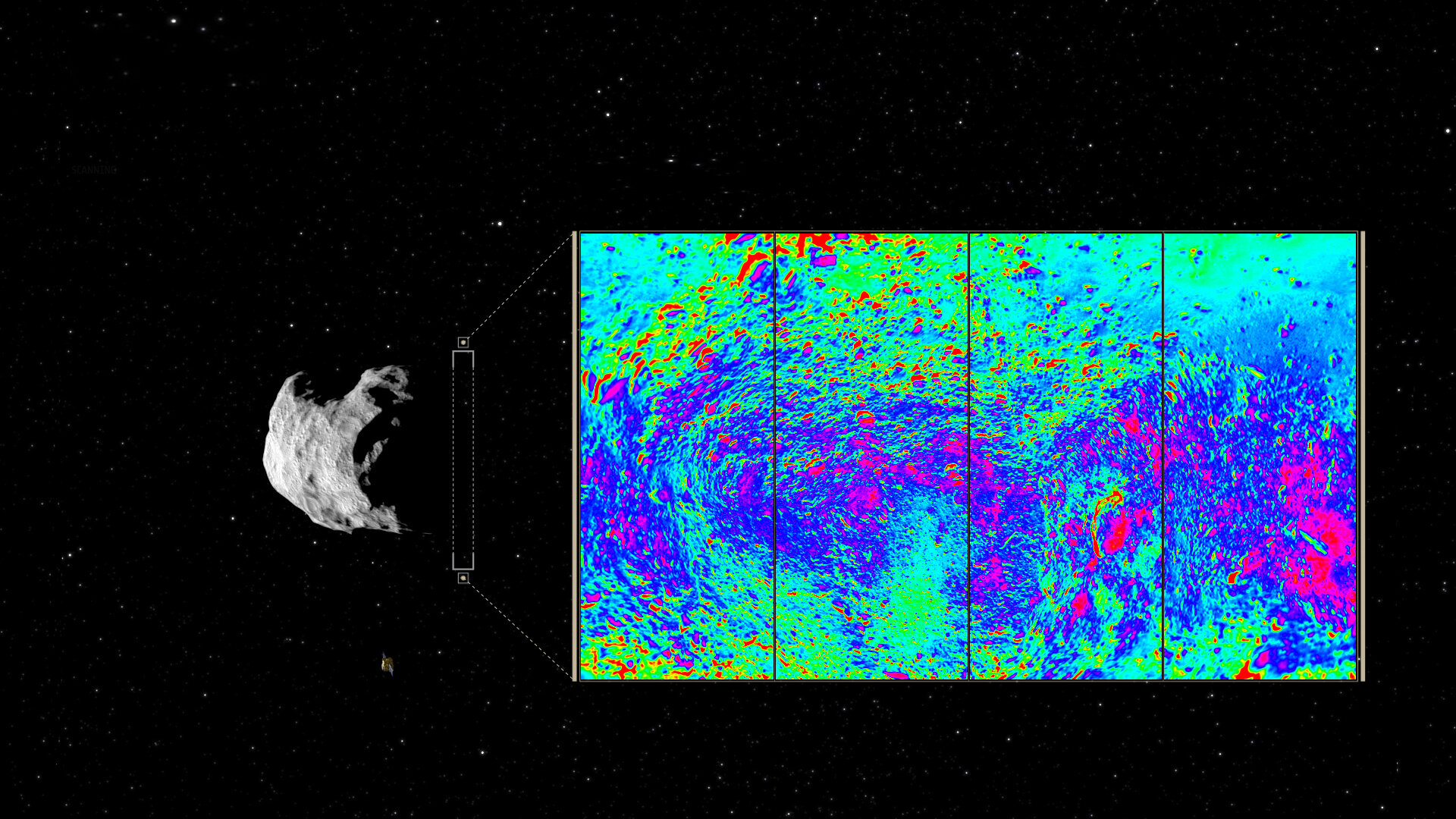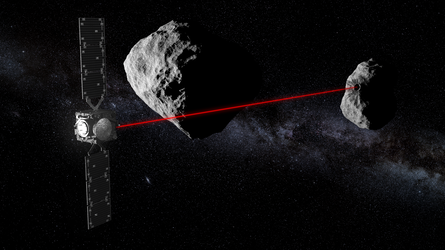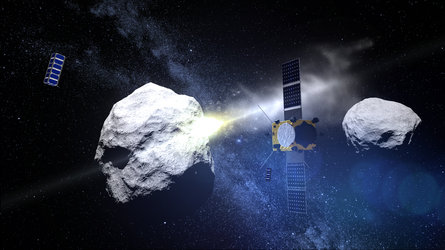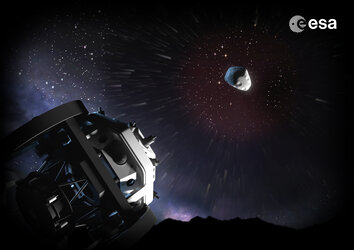Science goals
Asteroids and comets are very interesting objects in their own right, as leftover remnants of the formation of our Solar System. Those bodies which come closest to Earth are classed as Near Earth Objects (NEOs) – rendering them more accessible for study at the same time as posing a possible impact threat.
While AIM has been conceived primarily as a mission of technology demonstration rather than scientific exploration, it nevertheless has an important scientific rationale, offering advances in fundamental asteroid research topics. These include:
Rotational evolution
Asteroids rotate in various ways, varying from simple rotation to precession or tumbling, and their rotation evolves due to a variety of torques and mechanisms affecting their spin properties. Ground-based observations are providing information on typical asteroid rotation states, suggesting the influence of an array of mechanisms.
For instance, there is some suggestion that asteroid rotation is constrained by ‘spin limits’, beyond which centrifugal acceleration would cause material to escape from non-monolithic ‘rubble pile’ asteroids. Indeed, this might be the origin of many binary asteroid systems. And photon pressure on an irregular asteroid body can induce rotational torque – known as the ‘Yarkovsky/YORP effect’.
AIM can provide ‘ground-truth’ for ground-based observations and modelling, in terms of the formation mechanisms of binary systems and the geophysics of asteroids. The unique feature of this mission is the close approach of Didymos to Earth at only 0.11 Astronomical Units in 2022, enabling simultaneous observations from AIM and ground-based optical and radar instruments.
Collisional evolution
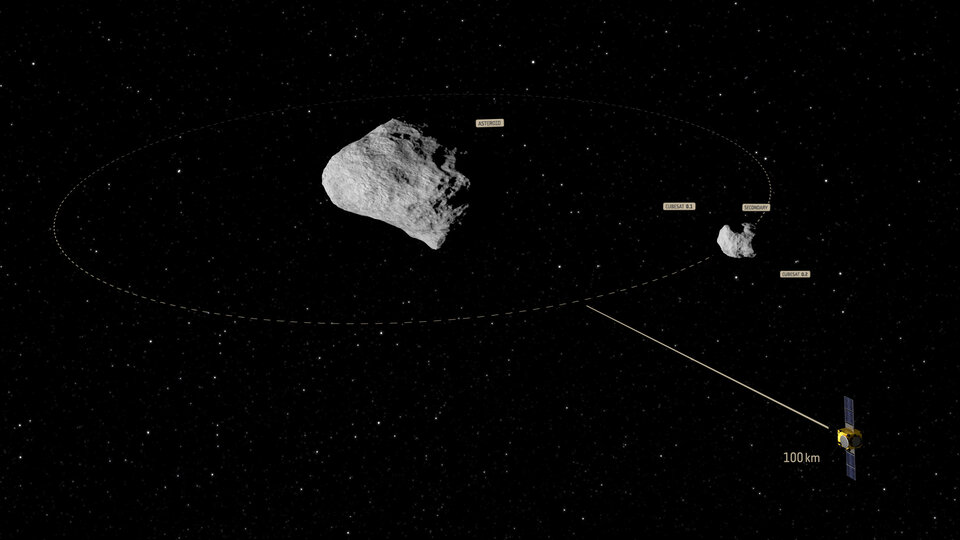
The Solar System originated in a gas and dust cloud in which relatively gentle collisions between sticky particles quickly resulted in the planets, asteroids and comets we know today. Eventually accretion gave way to more energetic collisions – and this collisional evolution of the Solar System continues to this day.
Theorists study the collisional evolution of asteroids by developing detailed models of their environment, with asteroids either disrupting or creating craters on larger asteroids, in the process creating more small asteroids to disrupt other big ones, known as a ‘collision cascade’. Meanwhile experimenters conduct high-speed projectile tests to study impact effects, especially the role of fracturing and disruption in asteroids’ structural make-up. But the scales of the phenomena involved in planetary and small body impacts are far larger than those that can be replicated in the lab, by many orders of magnitude. Extrapolations from craters detected on asteroids, or the aftermath of distant collisions, can only go so far.
The AIDA scenario will provide a unique opportunity to observe a collision event directly and simultaneously from space and ground-based optical and radar facilities. For the first time, an impact experiment at asteroid scale will be performed with the knowledge of both the precise impact conditions and impact outcome, as well as the physical properties of the target. This will be the first fully documented asteroid scale impact experiment, which can then be used to validate scaling laws to make future impact simulations far more accurate.
Evolutional coupling
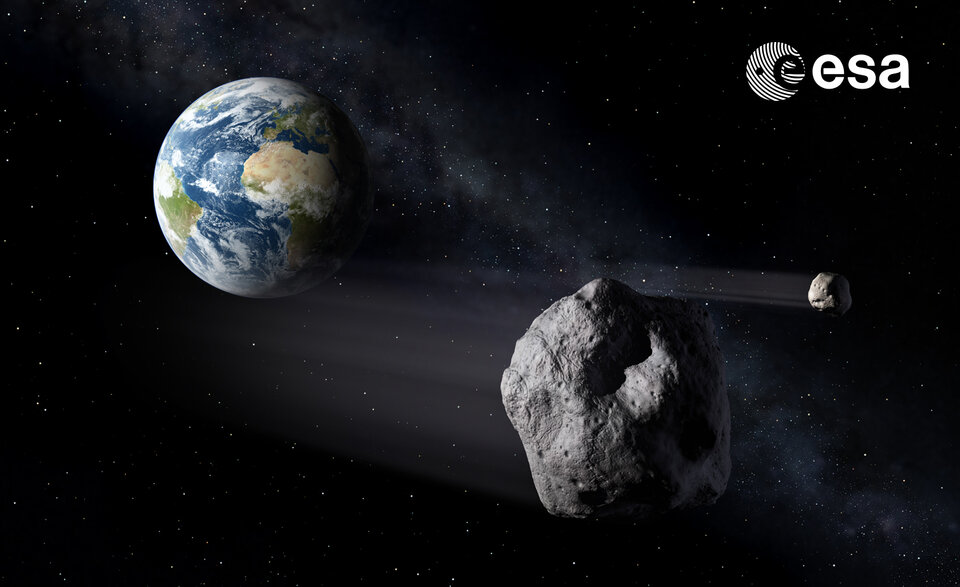
Collisional, orbital and rotational evolution are coupled to each other in various fascinating ways. This coupling takes a number of forms, with the subtle effect of thermal emissions altering a body’s spin state (YORP effect) or slowly driving its orbit into resonances (Yarkovsky effect) which can cause it to rapidly exit the main asteroid belt. Similarly the Yarkovsky effect depends on the spin state, which is continuously changing due to collisions and the YORP effect. Collisions are also a key driver of rotation state, not just in the obvious brute force way but because changing the asteroid’s shape influences its YORP-driven rotational evolution. And in turn the rotation state of a given asteroid can have a significant effect on collision outcomes.
The orbital evolution of asteroids is decisively driven by collisions – simulations suggest that over billions of years ‘collisional grinding’ in the asteroid belt tend to flatten orbits and causing the belt to cool dynamically. On shorter timescales of tens to hundreds of millions of years, collisions creater smaller fragments that can be driven more easily into resonances by the Yarkovsky effect, and then rapidly evolve out of the main belt. This transport mechanism is the major source of Near-Earth Asteroids.
Formation theories can now be tested by observation of actual asteroids and follow-up of their morphological behaviour, including ‘activated asteroids’ that appear to be shedding mass, either through rotational fission or small collisions. The same techniques applied to AIM’s Didymos flyby and the DART impact should represent a quantum leap in the accuracy of our modelling and interpretation of observations, and our understanding of the issues governing the evolution of these small Solar System bodies.
These processes are at the heart of the formation and evolution of our Solar System. It is increasingly clear that, directly or indirectly, they might well have played a crucial role in the development of life on our planet. On one side, through massive collisions and mass extinctions, on the other by a ‘mass input’ of the building blocks of life, possibly including Earth’s water. Researching asteroid impacts is therefore key to understanding our past and perhaps also our future.


